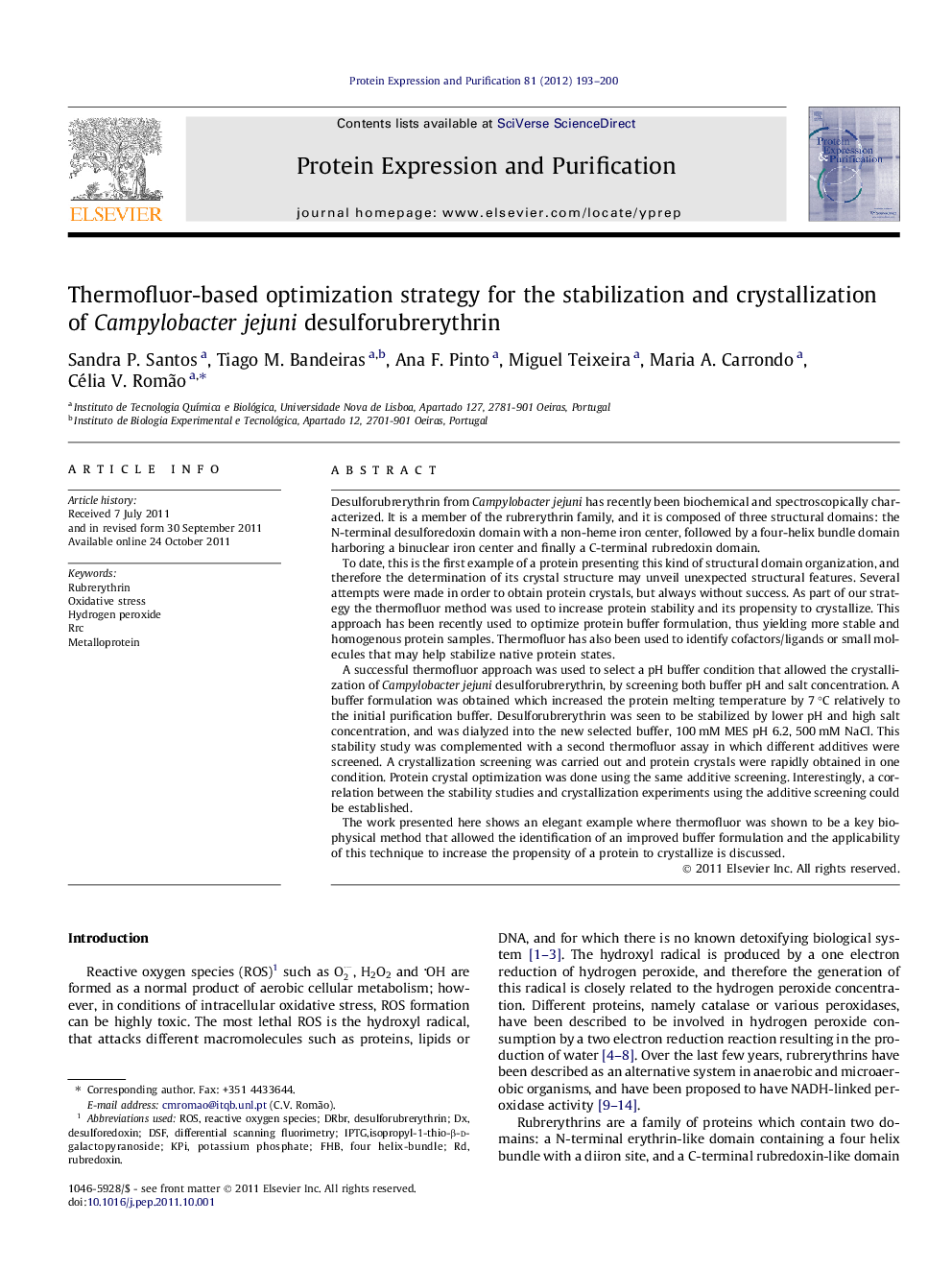| کد مقاله | کد نشریه | سال انتشار | مقاله انگلیسی | نسخه تمام متن |
|---|---|---|---|---|
| 2020699 | 1069199 | 2012 | 8 صفحه PDF | دانلود رایگان |

Desulforubrerythrin from Campylobacter jejuni has recently been biochemical and spectroscopically characterized. It is a member of the rubrerythrin family, and it is composed of three structural domains: the N-terminal desulforedoxin domain with a non-heme iron center, followed by a four-helix bundle domain harboring a binuclear iron center and finally a C-terminal rubredoxin domain.To date, this is the first example of a protein presenting this kind of structural domain organization, and therefore the determination of its crystal structure may unveil unexpected structural features. Several attempts were made in order to obtain protein crystals, but always without success. As part of our strategy the thermofluor method was used to increase protein stability and its propensity to crystallize. This approach has been recently used to optimize protein buffer formulation, thus yielding more stable and homogenous protein samples. Thermofluor has also been used to identify cofactors/ligands or small molecules that may help stabilize native protein states.A successful thermofluor approach was used to select a pH buffer condition that allowed the crystallization of Campylobacter jejuni desulforubrerythrin, by screening both buffer pH and salt concentration. A buffer formulation was obtained which increased the protein melting temperature by 7 °C relatively to the initial purification buffer. Desulforubrerythrin was seen to be stabilized by lower pH and high salt concentration, and was dialyzed into the new selected buffer, 100 mM MES pH 6.2, 500 mM NaCl. This stability study was complemented with a second thermofluor assay in which different additives were screened. A crystallization screening was carried out and protein crystals were rapidly obtained in one condition. Protein crystal optimization was done using the same additive screening. Interestingly, a correlation between the stability studies and crystallization experiments using the additive screening could be established.The work presented here shows an elegant example where thermofluor was shown to be a key biophysical method that allowed the identification of an improved buffer formulation and the applicability of this technique to increase the propensity of a protein to crystallize is discussed.
► Desulforubreythrin thermal stability was increased using thermofluor.
► Alternative buffer formulation and ligands effect on stability was tested.
► Protein stability was positively modulated by different pH and ionic strength.
► Improved buffer formulation allowed proper protein crystal contact formation.
Journal: Protein Expression and Purification - Volume 81, Issue 2, February 2012, Pages 193–200